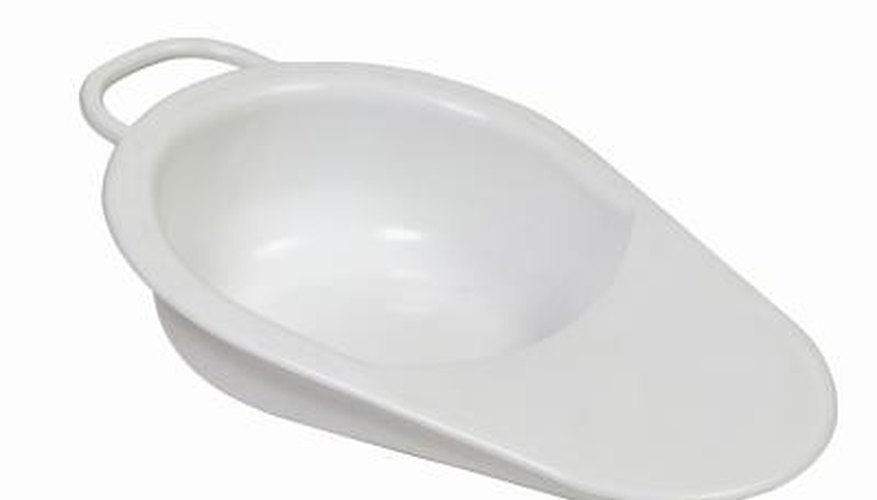Bedpans are not all made alike. The standard bedpan is shaped like a toilet seat and is large, about four inches thick with a slightly lower grade in the front. The fracture bedpan is made to slide under the patient and is much smaller then the standard size. It is four inches high on one end and gradually tapers to an inch on the other end.
- Bedpans are not all made alike.
- The fracture bedpan is made to slide under the patient and is much smaller then the standard size.
Assemble the necessary materials, including the fracture bedpan, pad, toilet paper or cleansing towels and gloves at the bedside. Close the curtains around the bed for privacy. Wash your hands, put gloves on and assist the patient with removing any clothing from the area where the pan will go.
Sprinkle powder on the pan so it will slide easily. Place the pan under the patient’s buttocks, placing your hand under the patient’s lower back for support. The end with the handle goes in the front and the flat end toward the back. If the patient cannot lift his buttocks off the bed then gently roll the patient to one side and slide the pan under the buttocks. Tell the patient to hold on to the guardrails until the pan is placed.
- Sprinkle powder on the pan so it will slide easily.
- Place the pan under the patient’s buttocks, placing your hand under the patient’s lower back for support.
Raise the head of the bed so that the patient is in a seated position, if possible. Leave the curtained area and wait to be summoned if the patient desires privacy.
Hand the patient toilet paper or moist disposable towels. If the patient is not capable of basic hygiene the nurse must perform the task of cleaning the perineum after evacuation. Keep the patient on her side after removing the pan for wiping. Check the area for redness or skin breakage and follow nursing protocol for treatment.
- Hand the patient toilet paper or moist disposable towels.
- If the patient is not capable of basic hygiene the nurse must perform the task of cleaning the perineum after evacuation.
Give the patient a moist towel or washrag to clean his hands, and a towel for drying. Lower the head of the bed and remove the bedpan and the pad from under the patient, supporting the back with your hand.
Empty the contents of the pan and clean it with antibacterial soap. Then remove gloves and wash your hands.
TIP
For very obese patients a second nurse may be necessary to assist with rolling the patient. Read the patient’s chart or review nurse’s notes to be prepared for any special medical needs. Place a pillow between the legs for hip alignment when rolling patient to the side, if needed.
